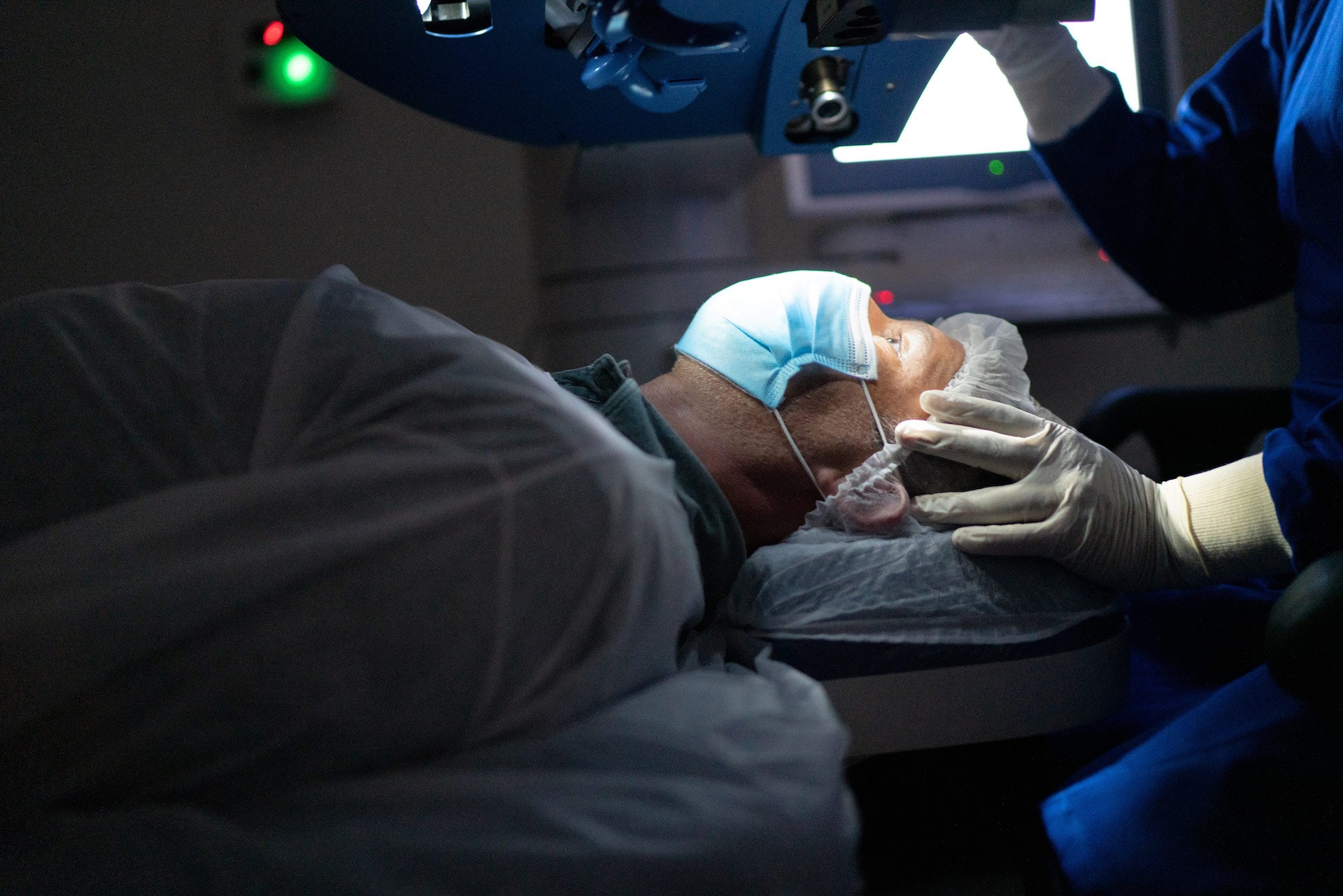Core Eye Services
Cataract Surgery
At Clarity Eye, we specialize in OHIP covered cataract surgery and intraocular lens implant
State-of-the-art Diagnostics
Our physicians and surgeons utilize state-of-the-art diagnostic and testing equipment, while adhering to the highest standards of patient care. Our team of highly skilled experts will assist patients in making informed decisions regarding their options based on factors like budget, condition, and vision goals.

For patients looking for advanced laser techniques in cataract surgery, visit our Refractive Surgery page
What is a Cataract?
The lens of the eye works together with cornea to focus light correctly on the retina. By changing its shape, the lens focuses transmitting light rays to create clear images and allows the eye to focus on these objects at varying distances. Made almost entirely of proteins, the lens tissue is transparent, which allows the light to enter the eye.
As we age (around the age of 40), some of the proteins that make up the lens of the eye start to break down and clump together. This clump creates a small opaque area on your lens - or a cataract. At first, you may not notice any symptoms when cataracts are mild, but over time, they can cause changes in your vision.
Common Cataract Symptoms
- Cloudy or blurry vision
- Colours look faded
- Light – lamps, headlights, sunlight – seem too bright
- Halo appears around lights
- Night vision is reduced
- Double vision (this may goes away as the cataract gets bigger)
- Frequent eye prescription changes
Cataract Treatment
If left untreated, cataracts can lead to vision loss, so if you are showing any signs, visit your optometrist.
Early cataract symptoms can be very easy to treat. New eyeglasses, better lighting, magnifying lenses, and sunglasses are all simple ways to improve vision problems caused by cataracts, but if these treatments do not help, cataract removal surgery will be required.

Cataract Surgery
Cataract surgery is only necessary if the cataract symptoms affect normal activities such as driving, reading, or looking at computer or video screens, even with glasses. Cataracts typically do not harm the eye, so waiting for a convenient time to have surgery is acceptable.
Cataract surgery is one of the most common procedures in Canada today. During cataract surgery, our ophthalmologist removes the clouded lens of the eye and replaces it with a clear artificial lens called an intraocular lens (IOL). The procedure usually takes less than 15 minutes and is performed on an outpatient basis. If cataracts are present in both eyes, they are typically treated four to eight weeks apart (but are increasingly now safely being done on the same day in certain situations).

What Steps are Involved if Cataract Surgery is Required?
Step 1: Measuring Your Eye
IOLs come in different focusing powers, just like prescription eyeglasses or contact lenses. Your ophthalmologist will measure the length of your eye and the curve of your cornea. These measurements are used to set your IOLs focusing power. The most common test used today to measure is using the ultrasound test which Clarity Eye has available. However, we also offer more advanced technologies like IOLMaster and the revolutionary Light Adjustable Lens (LAL). While these procedures are not covered by OHIP, they offer more accuracy and better visual outcomes for patients. If you're interested, we'll be happy to discuss these technologies with you.
Step 2: Determining Best IOL Type for You
While most IOLs are made of silicone or acrylic and coated with a special material to help protect your eyes from the sun’s harmful ultraviolet (UV) rays, there are many lenses to choose from. It’s important to know what each type of lens offers so an informed decision can be made. Clarity Eye offers the standard monofocal IOL, as well as premium IOLs (which are not covered by OHIP). Based on your vision goals, our ophthalmologists will advise you on the best options based on your situation.
Step 3: Surgical Process
To keep things simple, we’ve provided a step-by-step process of the actual cataract surgery:
- Patient receives numbing eye drops and a sedative prior to surgery
- Surgeon creates a small incision in your eye and uses phacoemulsification (an instrument that emits ultrasonic waves) to break down the lens into small pieces.
- Using a suction device, the surgeon removes the tiny lens fragments from your eye
- The new IOL is implanted
- The incision is self-sealing 99% of the time without the need for a suture
- A special shield may be required to be worn over the treated eye
- After 15 to 30 minutes of rest, you may go home.
